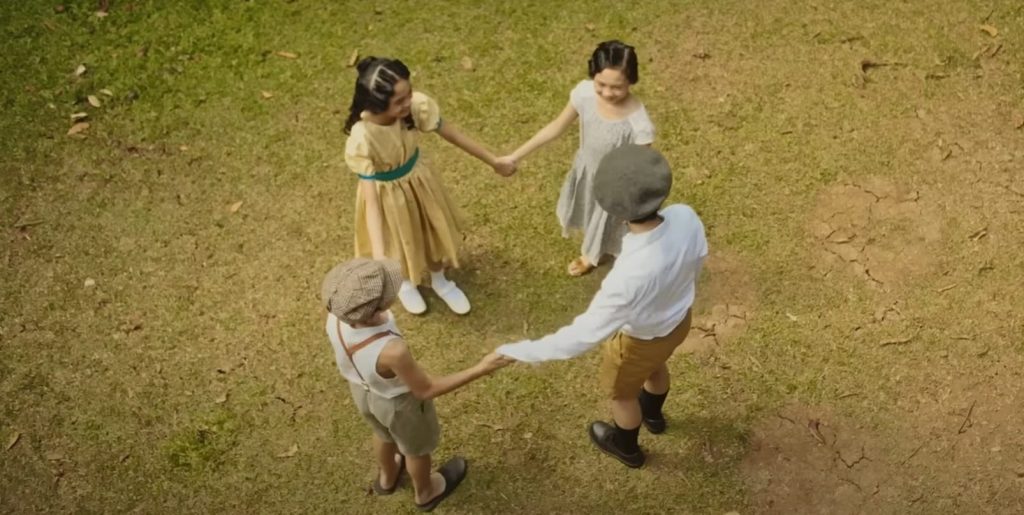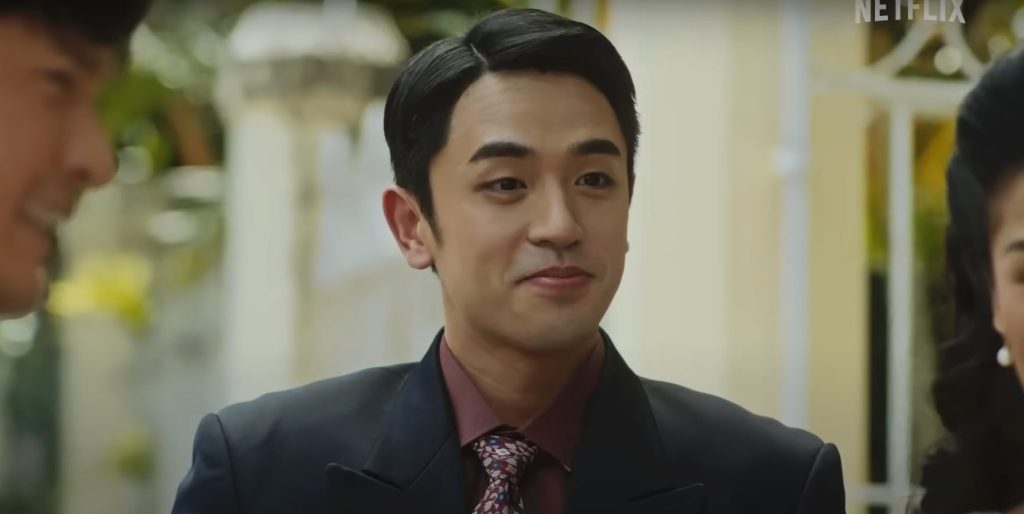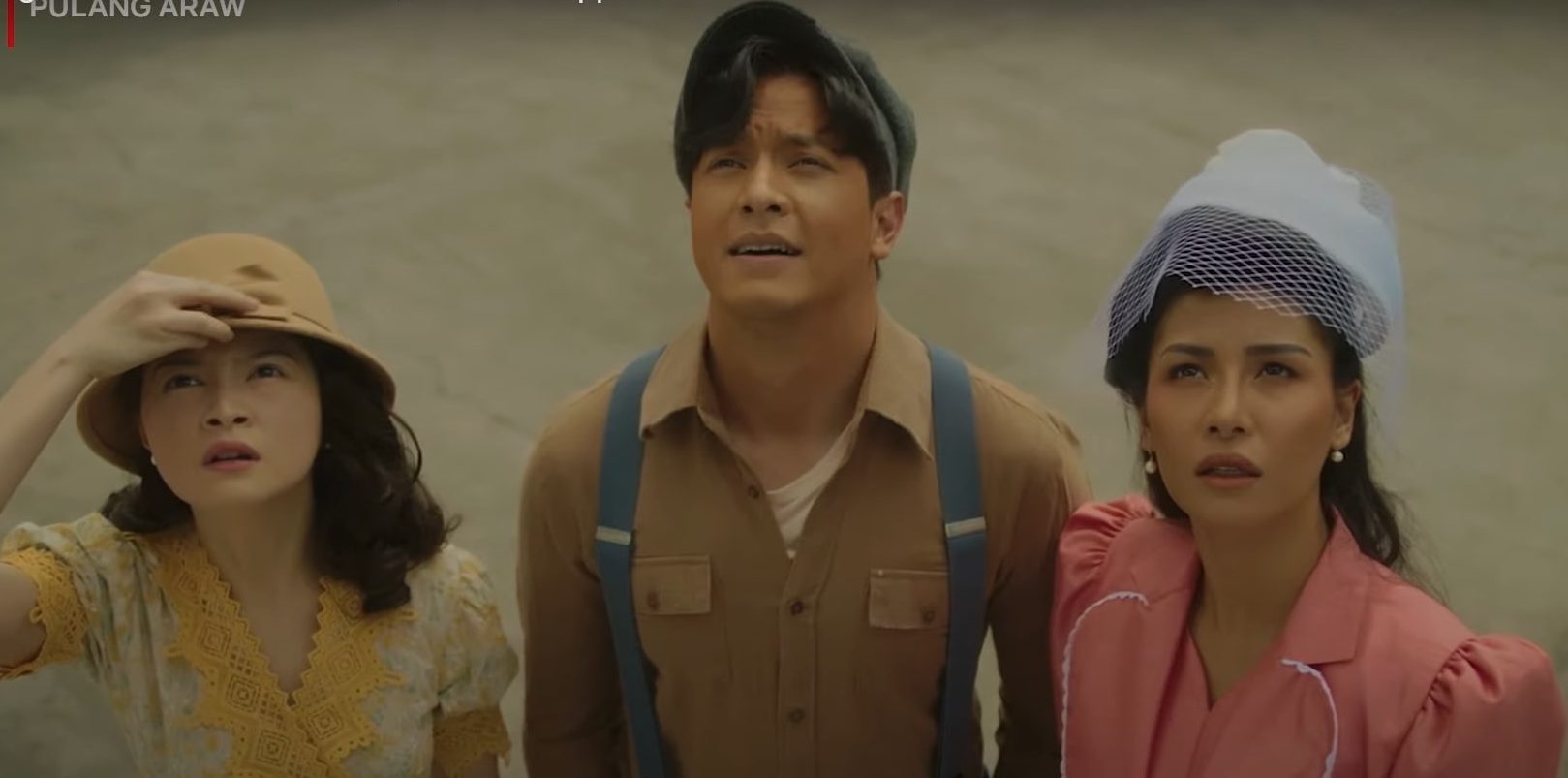Netflix’s Filipino show, ‘Pulang Araw,’ delves into the Japanese Occupation of the Philippines during World War II. The narrative follows four childhood friends who are faced with the atrocities, suffering, and challenges of surviving the war while being tested themselves. As they attempt to work through the chaos, their individual lives brush into contact with one another, influencing the journey they embark on while simultaneously probing into their psyche, lives, and the flickering hope that things will get better.
Created by Suzette Doctolero, the show examines the fragility of social order, national identity, and the egregious ramifications of a war landing on the shores of a country whose civilians become embroiled in the conflict and tension of an oppressive period. ‘Pulang Araw’ uncovers the pain of a difficult era in Philippine history while simultaneously exploring the themes of liberty, loyalty, and fate through its characters. Consequently, the thought-provoking subject matter at its heart prompts several questions about the war drama’s authenticity and whether it is based on a true story.
Pulang Araw Unearths the Painful History of a Country’s Occupation by Enemy Forces
‘Pulang Araw’ is a fictional story of four childhood friends who are landlocked in a battle between nations during the real-life Japanese Occupation of the Philippines during World War II, specifically from 1942 to 1945. Although the central characters presented in the story are made up, Suzette Doctolero, who wrote the script, was interested in diving into the reality of Filipino lives during the oppressive period when tragedies were visited upon the country and its people. It was a prescient topic for the head writer, whose grandparents served as guerilla fighters and vaudeville performers during the war. She stated that one of her grandfathers even lost his life during the Japanese era when he was beheaded.

In an interview with Tatler Asia, Doctolero said, “This [Pulang Araw] is 12 years in the making. Right after I made Amaya, it was already approved by GMA [Network] but it didn’t come to fruition off the bat. It just came in time today; especially now—the Philippines may be caught between two major countries again…just like before.” The creator referenced the current escalation of affairs between the Philippines and China and the growing hostility between America and China as a worrying indicator that things like what happened during World War II might repeat themselves if people weren’t careful. “The reason why we did this is very clear to all of us and [in hindsight] I am grateful that we didn’t do this in 2011 but did it today instead because it is more relevant now than ever,” she added.
A salient aspect of ‘Pulang Araw’ is how it depicts the helplessness of the situation the Filipinos find themselves in after the Japanese assert their authority and claim over their country. Doctolero believed that most people were like pawns during that era, caught between the conflict of two warring nations. She intended for the show to remind Filipinos that they should always support their own rather than casting their support for others. “When we watch we can also reflect and ask ‘Why is this the history of our country? Why do we always become the pawn?’—it’s important that we see this story because history always repeats itself… because we never learn,“ she said.
Pulang Araw Derives Its Authenticity From Real-Life Accounts
During the creation process, Suzette Doctolero relied on firsthand accounts of World War II veterans, vaudeville performers, and comfort women who lived through the Japanese Occupation. According to the creator and writer, she was not interested in depicting a tale drawn from the books. It was more important for her to learn about the events that had never been documented in history, basically the harrowing tales of personal cost inflicted on people who had their lives taken apart. Ashley Ortega, who plays Manuela Apolonio, told Philippine Daily Inquirer, “We interviewed comfort women from 1945 during World War II. I really cried when I heard their stories. It’s sad … what they had to go through back then.”

For the uninitiated, comfort women were women and girls who were forced into sexual slavery during World War II. It was reportedly a practice undertaken by the Imperial Japanese Armed Forces in occupied nations and territories to keep morale within the ranks high. They purportedly tried to rationalize it by stating it would reduce the risk of rape and the spread of sexually transmitted diseases. However, it led to severe sexual, physical, and emotional abuse of the women who were forced to serve the Japanese soldiers and often subjected to maltreatment at their hands. “Of course, I also learned a lot. It made me realize just how fortunate our generation is that we never had to experience a war. We should always be grateful for what we have,“ Ortega added.
She continued, “There were terms used during the war that we didn’t really know about. I had to study well because the show tackles things that really happened in our history. It’s a sensitive topic, so I want to do my role justice. We have to be careful of every line we say. The series aims to depict the courage of Filipinos, how they fight amid the struggles.“ While ‘Pulang Araw’ delves into a period that is rife with hurt for most Filipinos, it also aims to bring to light how atrocities can be repeated if people are not careful. Doctolero hopes to remind people that history can often revisit us in various ways if the past is forgotten, and her show, although fictional in its conception but set during an actual period, is a harsh and realistic representation of that message.
Read More: Best Filipino Movies on Netflix


You must be logged in to post a comment.